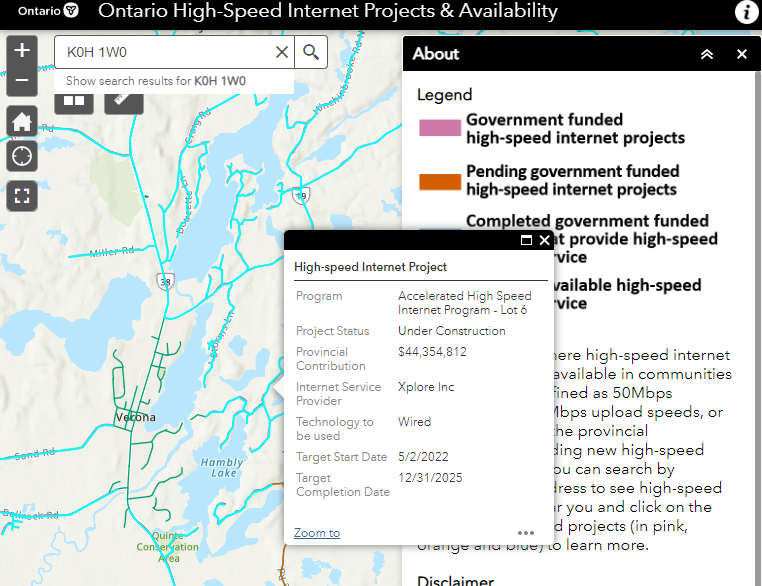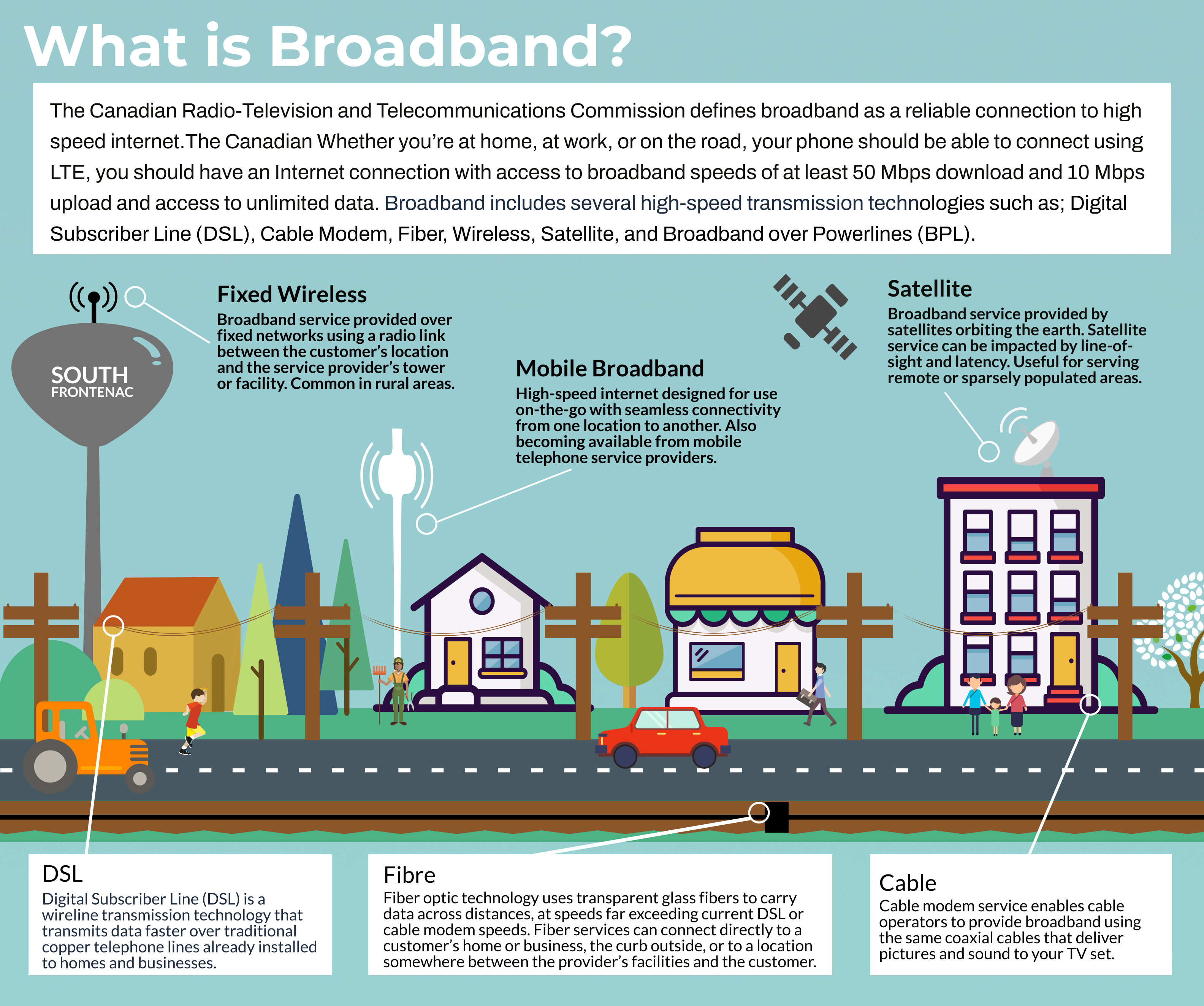Officials at all levels of government are looking for ways to bring improved connectivity to rural communities.
However, municipal governments do not have a mandated role in telecommunications, which is regulated at the Federal level. Also, since the infrastructure and service is privately owned by ISPs, the location and availability of broadband is typically not available to municipalities.
The cost of broadband infrastructure also makes it difficult for many rural municipalities to support or influence the rate or location of broadband expansion in their communities. Almost all incentive funding is provided directly to ISPs by the federal and provincial governments through various grant programs.
That said, municipal governments across Ontario are recognizing and looking for ways that they can bridge the “digital divide”, a term used to describe gaps in availability of broadband, service quality and affordability.
The Rural Ontario Municipal Association (ROMA) released two comprehensive resources tailored specifically for Ontario’s rural municipalities:
- The Municipal Connectivity Primer gives an overview of the broadband landscape, including Canada’s regulatory framework
- The Municipal Roadmap lays out components of a municipal connectivity plan that municipal councils and staff can implement to create local solutions.
These resources were designed to provide consistent information around connectivity and key terms, create a framework to evaluate connectivity policy decisions, establish a better understanding of the possible municipal roles in connectivity, and identify actions that councils can start taking to prepare for conversations around connectivity.
Federal & Provincial Broadband Funding Programs
In an effort to improve the connectivity throughout South Frontenac, Council has provided their endorsement of applications made by WTC Communications and Bell.
Additionally, 59 heads of Council from across eastern Ontario voiced overwhelming support for the Eastern Ontario Regional Network (EORN) Gig Project, which aims to connect homes and businesses across the region with ultra-fast internet speeds. These municipal leaders are joining the Chairs of EORN, the Eastern Ontario Wardens’ Caucus (EOWC) and the Eastern Ontario Mayors’ Caucus (EOMC) in urging the federal and provincial governments to fund the region-wide Gig Project. The project would expand fibre to homes and businesses to deliver internet speeds up to 1 Gig (1,000 Megabits per second).
For more information on funding programs, please see the information below.
Universal Broadband Fund
With the proposed Budget 2021, the now $2.75 billion Universal Broadband Fund will support high-speed Internet projects across the country. Budget 2021 proposes to provide an additional $1 billion over six years, starting in 2021-22, to the Universal Broadband Fund to support a more rapid rollout of broadband projects. The Universal Broadband Fund has been designed to fund broadband infrastructure projects that will bring high-speed Internet at 50/10 Megabits per second (Mbps) to rural and remote communities. In addition to funding a diversity of high-speed Internet projects to connect Canadians, there is:
- up to $50 million available to support mobile Internet projects that primarily benefit Indigenous peoples, including projects along highways and roads where mobile connectivity is lacking;
- up to $750 million available for large impact projects;
- up to $150 million available as part of our Rapid Response Stream.
The Universal Broadband Fund is part of the Government of Canada's coordinated plan to connect all Canadians: High Speed Access for all: Canada's Connectivity Strategy.
It is also consistent with the Government's roadmap for supporting strong and resilient rural communities.
EORN Gig Project
The EORN Gig Project aims to deliver ultra-fast internet to homes and businesses to meet the needs of the region for a generation. EORN is seeking federal and provincial support for the project, which takes a regional approach to help maximize coverage and stretch tax dollars further.
Both governments have stepped up with important broadband funding programs. The EORN project would work in tandem with local broadband initiatives to achieve this shared goal. It will take a range of solutions to fix rural broadband.
Gig is defined as an Internet speed of 1,000 Mbps or 1 Gbps (gigabit per second), that provides seamless, reliable connectivity for business, healthcare, education and other services. Smart technologies that depend on reliable, continuous high-speed connectivity for realtime data sharing also need gigabit speeds.
The EORN Gig Project would support the region’s COVID-19 recovery, economic growth and help provide more equitable access to education and health care:
- Increase regional GDP by $300 million.
- Create more than 9,700 new jobs.
- Increase home values by 3 per cent.
- Increase property tax revenue by $20 million.
- Lower health care delivery costs by 4 per cent.
- Reduce greenhouse gas emissions (telecommuting).
The EORN Gig Project leverages previous investments and projects by building on the fibre optic backbone and other infrastructure across the region. Taking a regional approach avoids having a patchwork of connectivity that could leave some communities behind.
The EORN Gig Project offers a comprehensive solution that ensures the region can keep pace with rising demand for connectivity over the long-term. It is critical for the region’s economic recovery from the pandemic and will support future economic growth and improved quality of life.
Quick Facts:
- EORN is seeking $200 million each from the federal and provincial governments, with the balance of the $1.2 to $1.6 billion project coming from the private sector and Canada Infrastructure Bank.
- Currently only 63 per cent of homes and businesses in rural eastern Ontario can access speeds of 50 Mbps download and 10 Mbps upload. The Canada Radio-television and Telecommunications Commission (CRTC) declared that the minimum basic service objective, with a goal of ensuring 90 per cent of all Canadians have this access by December 2021.
- EORN’s approach has the unanimous support of the Eastern Ontario Wardens’ Caucus and Eastern Ontario Mayors’ Caucus, who have sent letters of support. They represent local governments across the region including every town and city, representing 1.1 million citizens.
- EORN anticipates it could provide up to 95per cent of the region or more than 550,000 premises with Gig service by 2025-6 if fully funded.
For more information, please review a full summary of the EORN Gig Project or visit their website.


